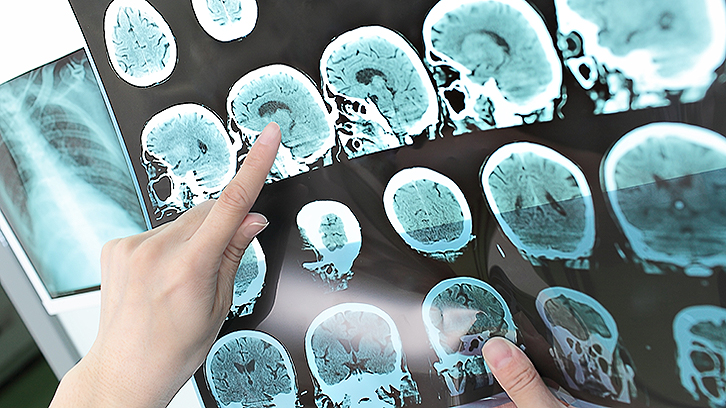The cerebral processing of sacred values and the disposition to violent extremism: peers' moderating influences on young radicals

Global research organisation Artis International and the UAB have been conducting in-depth studies into contemporary armed conflict for over a decade, with a focus on the cultural and behavioural factors that drive violent extremism. The established anthropological concept of sacred values has been successfully applied in research relating to a variety of conflicts: from Israel-Palestine to the rise of ISIS.
While previous studies have shown de-radicalisation to be extremely difficult, the escalation of radical beliefs into actual violence may still be curtailed with an improved understanding of the neurocognitive underpinnings of the process.
A better understanding of the psychological and neurocognitive foundations of the radicalization processes of young combatants and supporters, in close and far-reaching conflict environments, is the main objective of this study in order to find ways to interact with them and favour approaches towards a deradicalization.
In the research published by the Royal Society Open Science, the brains of 30 radicalised men of Pakistani origin were scanned through neuroimaging techniques while they answered questions pertaining to the defence of sacred and non-sacred values, which required in-depth interviews with more than one hundred individuals. This sample, recruited from Barcelona’s Pakistani community over a two-year (2014-1016) program of intense ethnographic fieldwork, were all self-avowed supporters of the radical jihadist organisation Lashkar-et-Taiba, previously responsible for the 2008 Mumbai attacks and the 2001 attack on the Indian Parliament.
A first experiment focused on identifying the variations of neural activity involved in processing sacred versus non-sacred values, while recording brain work in real time. Each member of the sample group was presented with a set of value-laden issues; some established as sacred to the individual in question (such as the depiction of the Prophet Mohammed or the status of Kashmir), and the rest being non-sacred. All were asked to signify the extent of their willingness to fight and die in defence of each value.
While this initial series focused purely on establishing the neurocognitive operations involved in the processing of sacred vs. non-sacred values, a second experiment expanded the paradigm by examining the effects of peer influence on the level of willingness to fight and die, recording their corresponding brain activity. Therefore, the participants were now presented with the same ‘values survey’ however additional data was added, purporting to show the average willingness to fight and die as stated by the wider Pakistani community. As such, each participant was faced with a (fictitious) group opinion of the environment that variously conflicted, matched or exceeded his own propensity to fight and die in defence of each given value.
As expected, participant’s willingness to fight and die over given issues was markedly higher when sacred values were invoked. However, scans showed differences in brain activity depending on whether participants were processing sacred or non-sacred values while formulating their willingness to fight and die. Specifically, areas of the brain previously established to handle deliberative, cost-benefit decision making, namely the Dorsolateral Prefrontal Cortex (dlPFC), Inferior Frontal Gyrus (IFG) and Parietal Cortex, showed reduced activity when sacred values were invoked. Moreover, answers to sacred values questions were also provided faster.
The cogitation of sacred values therefore appears to diminish the brain’s deliberative faculties while simultaneously promoting a faster response. This implies yielding more rapid decisions with a less basis in conventional calculation and consideration.
The peer influence study, meanwhile, found that the level of willingness to fight and die moderated toward that given by peers when a lower level was attributed to this wider group. Additionally, neuroimaging scans detected associated activity in the aforementioned dlPFC brain area, suggesting that peer influence can stimulate an increase in deliberative decision making that yields a reduced propensity toward violence and self-sacrifice.
These experiments provide a clear, neurocognitive insights into the radicalised mind’s adoption of violent action and the evident limitations of resolution measures rooted in cost-benefit persuasion (economic inducements, custodial penalties or other cost imposition approaches). These findings show that such approaches appeal to areas of the brain that are subdued during sacred value decision making.
While sacred values are known to be resistant to peer influence, the peer influence component of this study indicates that this factor may well help reduce the overall instances of violence in the defence of sacred values. The fact that the brain’s deliberative faculties reassert themselves when peer attitudes are invoked suggests a path toward reduction and mitigation rooted in family, peer and community groups.
Universitat Autònoma de Barcelona
Artis International
References
Hamid N et al. (2019). Neuroimaging ‘will to fight’ for sacred values: an empirical case study with supporters of an Al Qaeda associate. R. Soc. open sci. 6: 181585. DOI: http://dx.doi.org/10.1098/rsos.181585

